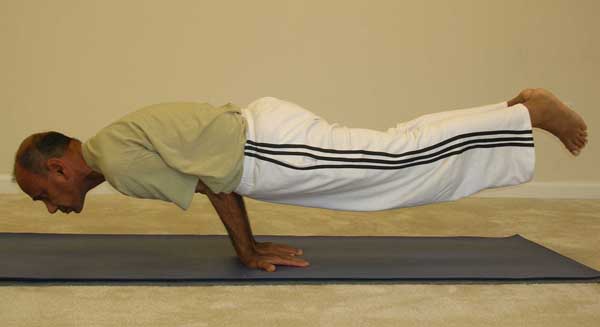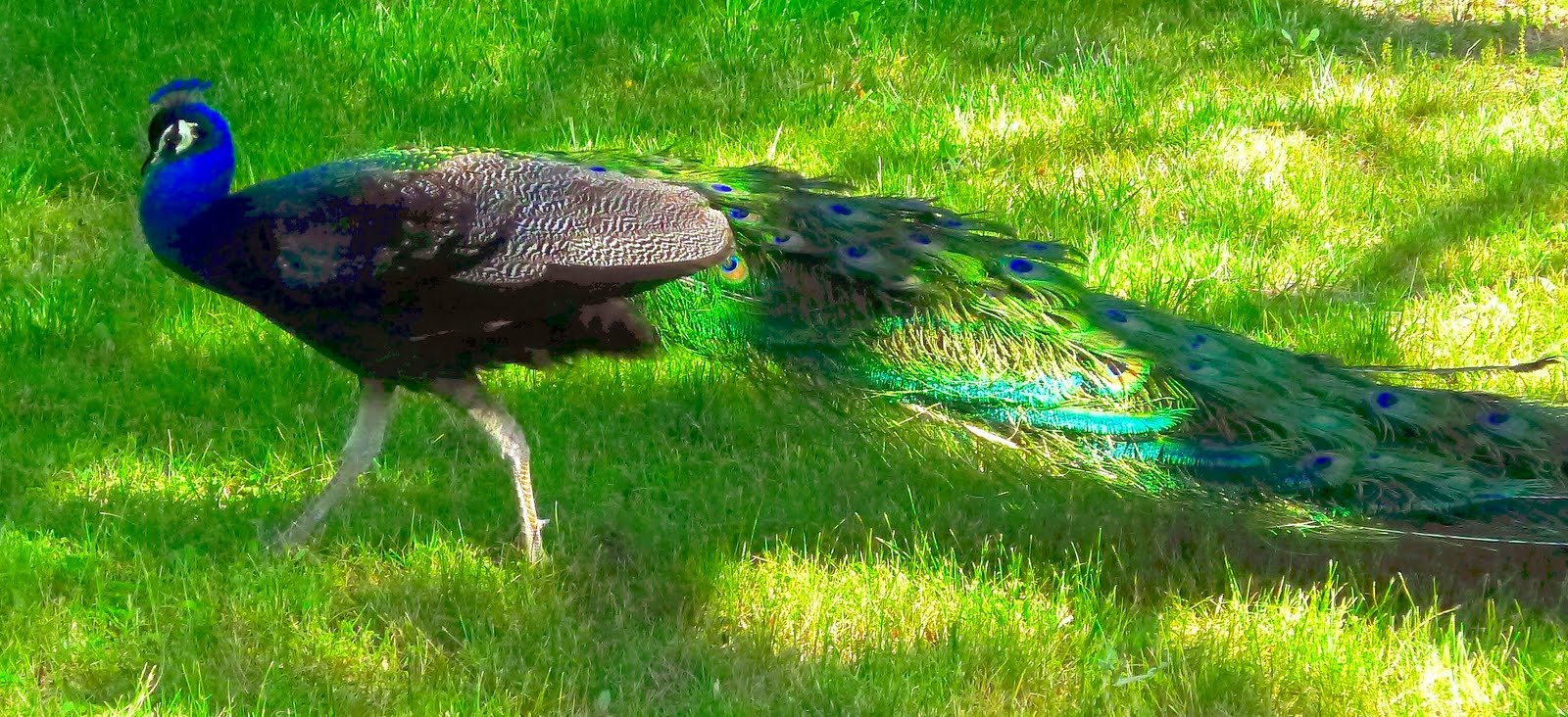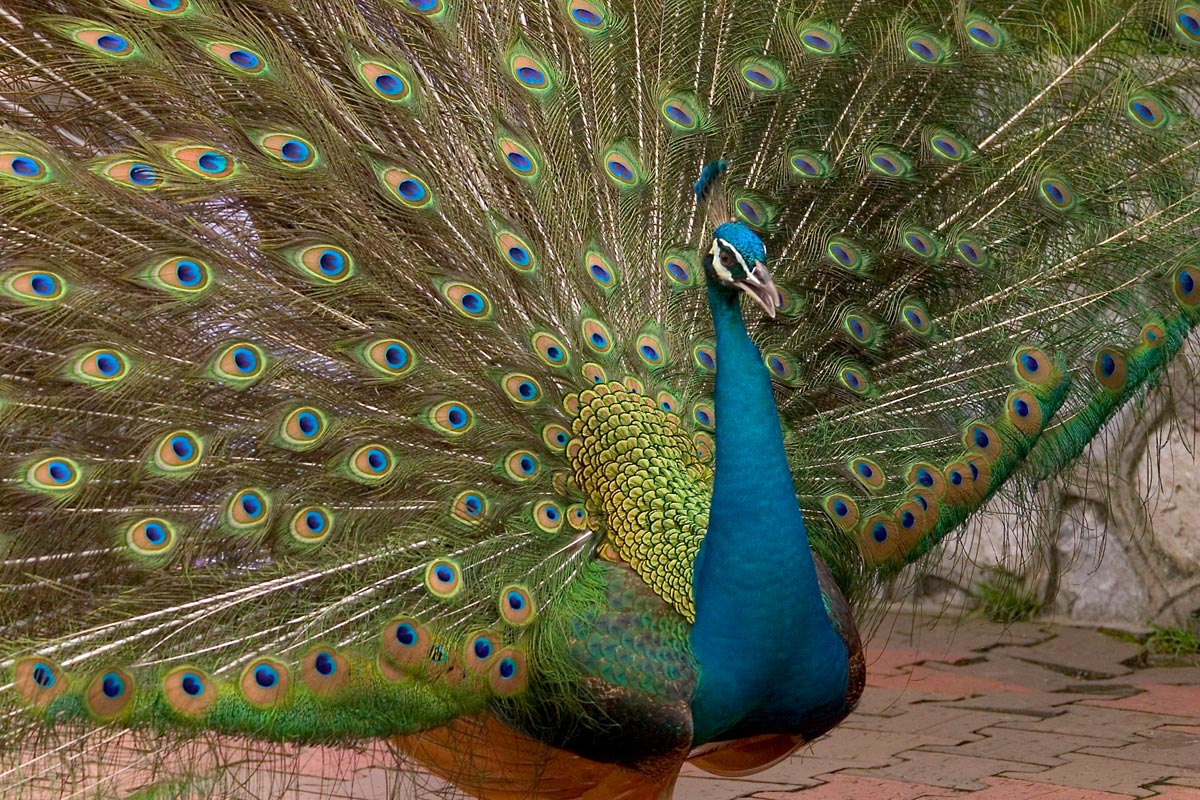The name Mayurasana – मयूरासन –
The pose, in the final position, resembles a peacock and hence the name Mayurasana. While growing up in India, I used to find the sight of a dancing peacock most enthralling. It was a common sight especially during the early part of the monsoon season. Hand fans made out of peacock feathers was a common item in most households.
Step-by-step
- Kneel down on the floor, with knees apart and heels lifted up.
- Place your palms on the floor, about an inch or two apart, with the fingers turned back toward the feet. Lean forward while pressing down with the palms (thumbs pointing out to the sides).
- Bend your elbows slightly and bring the outer forearms, up to the elbows, together. Now try to bend the elbows to a right angle and bring the knees slightly in front of the hands.
- Leaning forward, lower your front torso onto the backs of your upper arms. Make an effort to keep the elbows together at the navel area.Firm your belly against the pressure of the elbows. Lower your forehead to the floor.
- Then, straighten your knees and stretch your legs out behind your torso, tops of your feet on the floor. Firm your buttocks and round your shoulders slightly downward. Lift your head off the floor and look forward.
- If you are a beginner, this may become your final position until you develop the strength and stability to continue with the subsequent steps given below.
- Begin to slowly shift your weight slightly forward—if your legs and buttocks are firm and active, this slight shift of weight will help lift your feet off the floor. Try not to force your feet off the floor as you might come down with your head striking the floor. Position your torso and legs approximately parallel to the floor.
- Hold the final position at first for about 10 seconds only, if comfortable. Gradually increase your time to 30 seconds as you gain more experience with the pose.
- To come out of the pose, lower your head and feet to the floor, bend your knees, and lift your torso off your arms.
- Relax in the child pose (Balasana) for a few moments.
Benefits
According to the Hatha Yoga Pradipika, "Mayurasana alleviates diseases like enlargement of glands, and other stomach disorders. It can rectify imbalance of the three doshas (vata, pitta, kapha). It neutralizes the effect of food taken indiscriminately, ignites the gastric fire (jatharagni) and may even destroy deadly poisons." (HYP 1.31)
Here are some of the benefits commonly associated with Mayurasana:
- Since pressure is maintained against the abdomen, it helps tone the abdominal muscles and direct blood to the digestive organs.
- Alleviates constipation, flatulence, indigestion and chronic gastritis.
- Stimulates the liver, kidneys, pancreas and gallbladder.
- Helps reduce acidity and acid reflux.
- Strengthens sexual organs.
- Strengthens the wrists, elbows, arms, shoulders and builds a strong core.
- Helps reduce stress and improve mental focus.
- Recommended for patients with diabetes and any ailments of the liver.
- Activates the Manipura Chakra (navel center) which is the seat of fire, life force and self identification.
- Removes toxicity from the abdominal organs.
Contraindications
- Any powerful yoga practice needs proper care and preparation. If you have weakness or pain in the wrists, elbows or shoulders, be very careful about placing your entire body weight in your wrists.
- Avoid the pose during pregnancy, menstruation and serious intestinal problems.
- Avoid the pose in case of ulcer, hernia, heart disease, high blood pressure, brain tumors and ear, eye, or nose infections.
- Because this pose is deeply detoxifying and can release built up toxins into the system, in certain situations you may feel slightly unwell after the pose. In that situation, reduce the amount of time and the repetitions of this pose and work on cleansing through diet etc. before building up to longer holds.
Is Mayurasana part of your yoga practice? I would love to hear about your experience with this lovely pose.



Namaste,
Myself Naga Babu from AP, INDIA. I am suffering with kidney stones in my both kidneys. I am a regularly practicing yogasans . Could you please suggest me the yoga techniques to cure my problem.
Regards
Naga Babu K
nagish4u@gmail.com
Dear Naga Babu, I am sorry to hear of your problem. Unfortunately, I don’t have any experience of helping with kidney stones. So, I really cannot provide you with any guidance.
black cumin oil is good and lots and lots of lemon juice undiluted and diluted with water. all yoga is great, steam room, prayer, fasting, surrender to God and Guru, the only Healer, the only doctor. Surrender all to that One Infinite Source that works relentlessly to bring his child home.